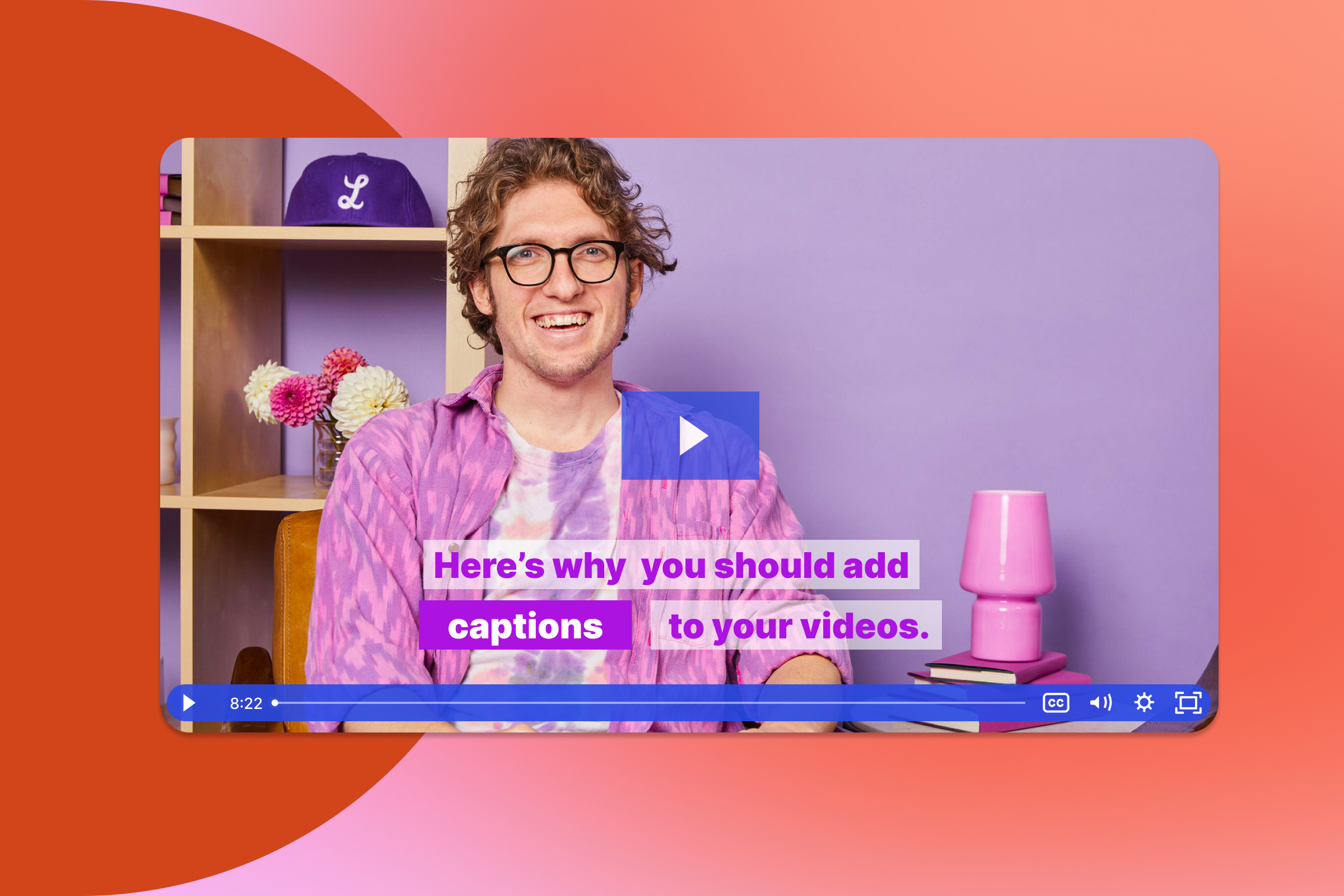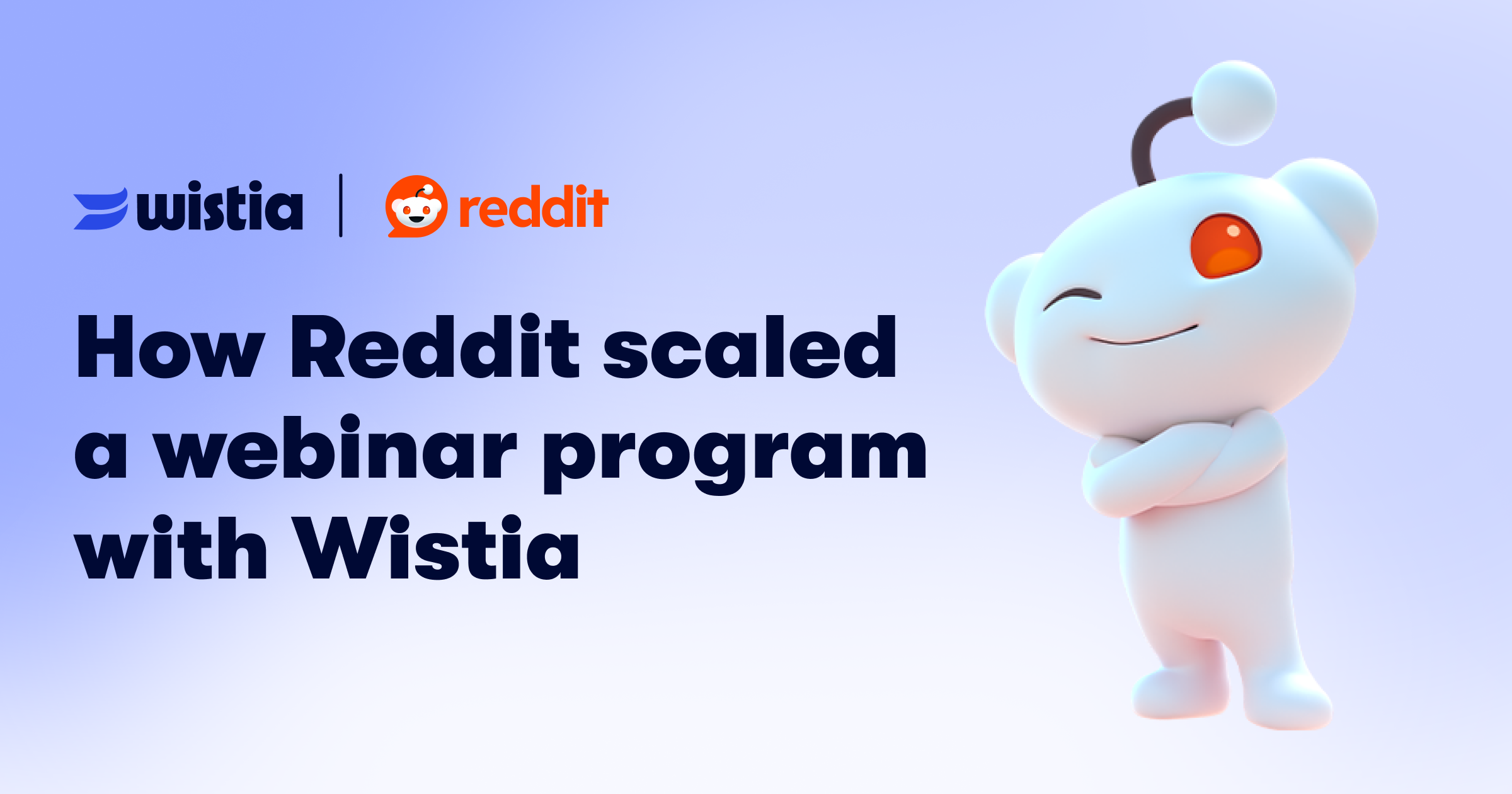Your Videos Should Have Captions—Here's Why
Accessibility is an important but often overlooked part of the video production process – but it doesn’t have to be!
April 9, 2020
Topic tags

Text and video are an incredibly powerful duo. And while we typically think of video as an audio-visual medium, text can also play an important role in making or breaking the viewer’s experience.
From powerful Nike ads to BuzzFeed’s Tasty cooking series, text overlays are changing the way we consume video online. Viewers have grown accustomed to seeing text and video together on social media, but beyond that, captions also serve another arguably even more important purpose: accessibility. Adding captions to your videos is a simple way to ensure that everyone who wants to consume your content can.
Accessibility is an important but often overlooked part of the video production process – but it doesn’t have to be! Let’s dive deeper into the world of captions, so that both the business and the viewer can succeed.
Making your content more accessible
Companies have an interest in making content accessible to everyone who wants to watch it. Captions open up your audience to hundreds of millions of people, including the over 350 million people worldwide who are deaf or hard of hearing, as well as folks who are non-English speaking.
There is also high demand for captions among the hearing population. They’re using their smartphones on the bus, scrolling through social feeds, or watching videos at work. Research shows that captions help these viewers remember and retain facts, parse complex topics, and even build vocabulary.
The best ways to create high-quality captions are either to:
- Bake the captions into your creative process, from scripting to animated text.
- Order a transcript from a professional service.
Here’s an example of a video we made for social media, where the captions were actually factored into the creative direction of the video itself.
You can also order your transcripts from a professional service like we do here at Wistia. We work with 3Play media to create accurate transcripts for videos hosted on our platform. You can order a transcript when you turn captions on in Video Actions. The transcription process takes less than one business day, and costs $5/minute.
While many accessibility features are still limited, video captions can create a more or less parallel experience for those who can hear and those who cannot. We interviewed Julian Moiwai from ZVRS on the blog a while back, and he offered some important insights into the world of captioned content.
“No availability of captions is the most frustrating aspect of online video. Often, we quit watching on the spot and move on with our lives, or take attempts at reading lips, or even hope to catch any visuals in the video that would help us understand the message.”
Captions in video are just one small aspect of the greater movement towards more accessibility in tech — and one of the easiest fixes you can easily apply today. Upload an SRT transcript of the script to your video, and people who otherwise might not be able to enjoy your content now can!
Complying with the law
Beyond being trendy with your captioned videos for social media, the law also demands that businesses meet certain accessibility standards. In the US, there are three main governing bodies to be aware of when it comes to video accessibility:
- CVAA: The Twenty-First-Century Communications and Video Accessibility Act, which was passed by Congress in 2010
- FCC: The Federal Communications Commission, a government regulatory agency
- ADA: The American Disabilities Act, a civil rights law passed in 1990
This handy infographic explains how each affects video: Source: 3Play Media
Failure to comply with these laws and regulations puts your business at a considerable risk of lawsuits and fines. But compliance can benefit your content. Meeting the FCC’s standards for quality, for instance, will inevitably force you to edit scripts for clarity, provide more complete information, and use more descriptive vocabulary.
Captioning videos is a simple way to open up your brand to scores of potential new customers. It’s puzzling why more professional content creators don’t add captions, especially when you consider the other benefits to marketing your business!
“Captioning videos is a simple way to open up your brand to scores of potential new customers.”
Benefitting from an SEO boost
Most video marketers know that without an audience, all the work that goes into producing and editing a video will be more or less for nothing. Captions boost SEO, making it easier for people to discover your videos online. Since most of online media is not captioned, there’s a huge potential for growth via keyword strategy.
SEO is especially important for video because Google currently favors informative videos for the top of its results pages. According to 3play, there are tremendous benefits for captioning your videos beyond the obvious.
“Optimized text is vital for video SEO. After all, search engines do not have ’eyes' to watch a video. Search bots ’crawl' your site, reading the text and code of your pages for indicators of what each is about. This way, Google and other search engines can return the most relevant information to search queries.”
When you implement a keyword strategy in your script, you can use the transcript to boost search traffic. For instance, if you are trying to target people searching for productivity software, you can work in relevant key terms such as “job performance,” “time management,” and “social media.”
3play also offers a few tips when it comes to captioning with SEO in mind:
- Putting the video on its own page, so it’s easier for Google to identify what the content’s all about
- Using specific, long tail keywords in addition to more obvious ones in order to stand out from other content
- Placing the full transcript either directly on the page, in the HTML header, or on a second, linked page
Check out this guide if you’re looking for more tips on getting started with SEO!
Of course, different search terms work better for different distribution channels, platforms, audiences, and goals. When you’re raking in the views or converting new organic search customers, it’ll all be worth it!
Keeping up with industry standards
Social media has helped make captioning your video an industry standard. If you’re not captioning your videos now, chances are you will be in the near future.
According to Digiday, Facebook users watch over 8 billion videos per day, and 85% of those videos are watched without sound. Some content creators have picked up on this trend early and have used it to their advantage. There’s a reason Tasty, NowThis, and The Dodo all have a similar look — and why all are viral successes.
For a user scrolling endlessly through a social media feed, it’s easy to skim over photos and auto-playing videos. Captions, however, can increase your chance of getting noticed and remembered.
Even if you don’t like watching adorable dogs and babies play together, the text overlays really help you understand what the video will be about before you start investing your time in watching it all the way through.
Content creators are capitalizing on the popularity of captions to reach and build their audiences. If you want to compete with all of the other content out there, you’ll soon see that captions are your best friend. Even as platforms evolve, video is here to stay. A proactive approach will not just benefit your business now, but far into the future.
“If you want to compete with all of the other content out there, you’ll soon see that captions are your best friend.”
Caption early and often
It’s written in the stars: Video captions are the way of the future. The process of editing transcripts, entering HTML tags, and testing keywords may seem time-consuming, but there are ways to ease the pain. When you customize your video in Wistia, we can order a transcript for you and install captions in several languages. When you make this a part of your pre-launch checklist, it will become routine in no time!
And captions don’t just have to be a perfunctory or legally required add-on; they can be a vital part of your creative strategy. Fun captions are visually dynamic and can help you emphasize certain terms or words. In turn, your captions will look great on social platforms, expose your brand to new audiences, and make your content more compelling. Captions for the win!






